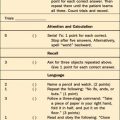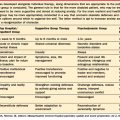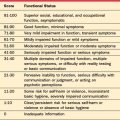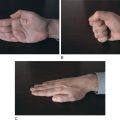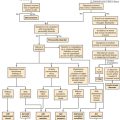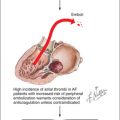CHAPTER 47 Lithium and Its Role in Psychiatry
HISTORICAL CONTEXT
Unfortunately, despite some early study by Mogen Schou and others, lithium’s wider adoption in the United States was hindered by concerns about lithium toxicity. Lithium chloride had been used as a sodium substitute in the 1940s, until several deaths were reported from lithium toxicity among hyponatremic patients. Thus, lithium was initially perceived as too dangerous for clinical application, and it was only in 1970 that lithium was approved by the United States Food and Drug Administration (FDA) for the treatment of mania.1
LITHIUM’S MECHANISM OF ACTION
The mechanisms by which lithium exerts its therapeutic effects are not entirely clear, but the signaling pathways with which it interacts are becoming better understood. Two major pathways are influenced by lithium. In the first, recycling of inositol is inhibited by lithium, which influences inositol 1,4,5-triphosphate (InsP3) dependent signaling.2–4 InsP3 signaling acts in part by regulating intracellular calcium release and protein kinase activation, with broad effects. At a neuronal level, lithium, like valproate, has been shown to increase the spread of growth cones, which are necessary for synapse formation. This effect is reversed by addition of myoinositol, providing some support for the importance of InsP3 in lithium’s effect.
In the second, lithium inhibits glycogen synthesis kinase 3-beta (GSK3B),4–7 an important enzyme in pathways including the Wnt signaling cascade.8 Notably, mice expressing lower levels of GSK3B exhibit behaviors similar to mice treated chronically with lithium.9 Signaling through the GSK3B pathway may also be central to the observed neuroprotective effects of lithium.10 Of course, both InsP3 and GSK3B pathways have convergent effects—both influence the serine/threonine kinase Akt-1,4 for example. Expression of many other genes (typically in lymphocytes) has been shown in single studies to be influenced by lithium administration, though the relevance of these effects to lithium’s effects on mood or other phenotypes is unknown.
PHARMACOKINETICS AND PHARMACODYNAMICS
Lithium is absorbed through the gut and distributes rapidly through body water, achieving peak plasma concentrations 1 to 2 hours after a single dose. (Slower-release forms may require 4 to 5 hours to reach peak concentration, because of transit time through the gut). As a monovalent cation like sodium, lithium’s clearance relies entirely on renal function. It is not metabolized by the liver, nor is it significantly protein-bound while circulating. In general, the half-life for renal excretion is approximately 24 hours, so steady-state serum levels are typically reached after 5 days. For this reason, lithium levels are typically checked about 5 days after initiation or dose change. Because lithium distributes throughout the body, it is influenced by lean body mass—for example, among geriatric patients, lithium levels for a given dose tend to be greater than among younger patients with greater lean body (including muscle) mass. Magnetic resonance spectroscopy studies suggest that brain lithium levels are highly correlated with plasma levels, though less so in patients at the extremes of age—that is, it is possible to have supratherapeutic levels in the central nervous system (CNS) while maintaining a normal plasma lithium level.
EVIDENCE FOR LITHIUM’S EFFICACY
Lithium in Acute Mania
Beginning with Schou’s study of lithium versus placebo for acute mania, lithium has repeatedly shown efficacy for the treatment of mania,11 with the first large randomized study of lithium treatment of acute mania finding lithium comparably effective to the antipsychotic chlorpromazine.12 Since then, multiple studies have found lithium to be superior to placebo and comparable or superior to other agents in the acute management of bipolar mania; few studies have found superiority for other drugs over lithium. A systematic review found 12 acute mania trials comparing lithium to placebo or another agent that met their criteria for data-pooling. This review of studies of lithium for acute mania found superiority for lithium over placebo and chlorpromazine, with equivalence to valproate and carbamazepine.13
As pointed out by Grunze,14 however, few studies of lithium in acute mania were undertaken with the methodological rigor required today for regulatory approval of a drug’s use. The first to do this was Bowden in his seminal study of divalproex sodium for the treatment of acute mania in 1994, which was designed to study that drug for FDA approval; by coincidence, the study also demonstrated lithium’s efficacy.15 This study was adequately powered (i.e., it included a large enough sample of patients to find a high probability of finding a statistically significant difference between treatments with a low probability of error), compared a drug to an agent known to be effective (lithium), and it included a placebo arm. Additionally, it was not biased by inclusion based on prior response to lithium. In this 3-week study, lithium was superior to placebo and equivalent in efficacy to divalproex sodium with a 50% response rate (defined as a 50% drop in mania scale scores) for lithium compared to 26% for placebo.15 Since that study, pooled data from trials of topiramate for mania failed to demonstrate a benefit for that drug, but did reconfirm the efficacy of lithium for acutely manic patients.16 The percentage of patients with a 50% or greater reduction in the Young Mania Rating Scale (YMRS) at day 21 was 28% with placebo (N = 427), 27% with topiramate (N = 433), and 46% with lithium (N = 227). Lithium was statistically better than placebo and topiramate on all psychometric measures other than the Montgomery-Asberg Depression Rating Scale (MADRS).
Monotherapy treatment in any phase of bipolar disorder, however, is increasingly rare, and is especially so in the treatment of acute mania.17 It appears that mania outcomes, in terms of time to response and proportion of patients who remit, may be improved with the addition of antipsychotics to lithium.18 The adjunctive use of typical (including haloperidol) and atypical (e.g., olanzapine, quetiapine, and risperidone) antipsychotics with lithium carbonate has been found to improve outcomes compared to lithium alone. The atypical antipsychotic ziprasidone, however, did not improve outcomes significantly compared to placebo when added to lithium.
Lithium in Acute Bipolar Depression
The options for the pharmacological treatment of major depressive episodes in bipolar disorder, unlike those for mania, remain few. In spite of being recommended as first-line treatment in recent bipolar treatment guidelines, there are few data to support the use of lithium as an acute antidepressant in bipolar disorder. A comprehensive review by Bauer and Mitchner19 identified only three placebo-controlled trials of lithium for bipolar depression (with a total of 62 subjects). While these trials showed a positive benefit for lithium, none was a randomized, parallel-group study; instead, they used a within-subject design in which each subject was started on lithium or placebo and then switched to the other. It is unlikely, unfortunately, that there will be any large, well-designed trials of lithium to answer this question, most prominently because there is no pharmaceutical manufacturer producing lithium that has any financial incentive to undertake such a study.
Lithium, used as monotherapy, appears to be as effective for the treatment of bipolar depression as the combination of lithium and an antidepressant. In a study comparing imipramine, paroxetine, and placebo added to lithium carbonate for the treatment of a major depressive episode in bipolar disorder, neither antidepressant added benefit beyond lithium alone.20 Response rates (defined as a Hamilton Depression Rating Scale [HAM-D] score of 7 or lower) were 35% for lithium alone, compared to 39% for imipramine, and 46% for paroxetine. In a secondary analysis, subjects with lower lithium levels (less than 0.8 mEq/L) had a lower response rate compared to the adjunctive antidepressant group, suggesting, perhaps, that higher lithium levels are as effective as lithium plus an antidepressant in the treatment of bipolar depression.
Lithium for Maintenance Treatment and Relapse Prevention of Bipolar Disorder
Lithium is the archetypal maintenance treatment for bipolar disorder. From Prien’s first maintenance study of lithium (comparing it to chlorpromazine) to more recent studies using lithium as a comparator for maintenance studies of other drugs, lithium has clear benefit for maintaining response and preventing relapse in bipolar disorder.12,21 Lithium’s clearest benefit in long-term use is in the prevention of relapse to mania, although relapse to depression is more common in patients with bipolar disorder. As is the case with lithium in acute mania, lithium’s efficacy compared to placebo was only confirmed in later studies designed to establish regulatory approval for newer drugs, including divalproex sodium and lamotrigine. Earlier studies were beset with methodological problems, including on–off rather than parallel group designs, lack of diagnostic clarity (e.g., the inclusion of unipolar patients), and rapid or abrupt lithium discontinuation in stable patients. Concerns about sudden discontinuation of lithium are genuine, as there is a high rate of manic relapse in these patients; inclusion of patients from these studies might artificially inflate the difference between lithium and placebo in maintenance treatment.22,23
Geddes and colleagues24 have completed the definitive systematic review of lithium for maintenance treatment in bipolar disorder. Having reviewed 300 studies, they included only five in their meta-analysis, limiting inclusion to randomized, double-blind, placebo-controlled trials. They found that lithium was more effective than placebo in preventing relapses to any mood episode (random effects relative risk = 0.65, 95% confidence interval [CI] = 0.50 to 0.84) and to mania (relative risk = 0.62, 95% CI = 0.40 to 0.95), with a nonsignificant effect on relapse to depression (relative risk = 0.72, 95% CI = 0.49 to 1.07).24 The average risk of relapse of any kind in 1 to 2 years of follow-up was 60% for placebo, compared to 40% for lithium; this can be understood as lithium preventing one relapse for every five patients treated compared to placebo. Relapse rates to mania were 14% for lithium compared to 24% for placebo, while relapse rates to depression were 25% for placebo compared to 32% for lithium. There are some limitations and criticisms of this study, however. The outcomes were not defined uniformly across the included studies, one study included in the analysis had exclusively bipolar II subjects, and the follow-up period of 1 to 2 years is too short to adequately evaluate the benefit of lithium (as some have argued that the maintenance benefit of lithium is only apparent after 2 years of treatment).23,25
Lithium was compared to olanzapine for the prevention of relapse of bipolar I disorder in a randomized, controlled, double-blind trial.26 Bipolar I patients were stabilized on a combination of lithium and olanzapine, randomized to one or the other drug, and followed for 12 months. There was no difference between drugs on the primary outcome measure or time to symptomatic relapse (YMRS or HAM-D scores of 15 or greater), although there were fewer relapses to mania/mixed (but not depressive) episodes in the olanzapine-treated group.
There remains some controversy about what adequate maintenance lithium levels should be. In order to minimize adverse effects and to increase patient acceptance of lithium treatment, lowest effective doses should be the goal. A randomized, double-blind study by Gelenberg and co-workers27 stabilized patients on a standard serum level of lithium (0.8 to 1 mmol/L), then assigned them to either remain at that level or to be maintained with a lower serum lithium level (0.4 to 0.6 mmol/L). Patients in the higher lithium level group had fewer relapses than those randomly assigned to lower lithium levels.27 A reanalysis of the data, however, controlling for the rate at which the lithium dose was lowered, found no difference between groups, suggesting that lower maintenance lithium levels may be adequate for some patients.28
Lithium in Rapid-Cycling Bipolar Disorder
Rapid-cycling is defined as four or more distinct mood episodes (either of opposite poles, or of the same pole after at least 8 weeks of partial or full recovery) within a 12-month period; patients with this course are notoriously difficult to treat and to stabilize. Some have concluded that lithium is less effective than other drugs (e.g., divalproex sodium) for this specific course of bipolar disorder, but an ambitious clinical trial and a large body of naturalistic data suggest that lithium is no less ineffective than other compounds for rapid-cycling.29–32 Calabrese and colleagues31 compared lithium to divalproex sodium in rapid-cycling patients stabilized on both drugs and found no difference between drugs on time to episode recurrence. As a testament to the difficulty of treating rapid-cycling, only 60 of the original 254 subjects achieved stabilization and were randomized to the two study conditions. In a cohort of 360 patients treated for bipolar disorder in Sardinia, time to recurrence was no different for the patients with or without a rapid-cycling course.32
Lithium in Suicide Prevention
The strongest evidence for decreased suicide in patients treated with lithium comes from a meta-analysis by Cipriani and co-workers33 of all randomized studies of lithium (either versus placebo or another drug) in mood disorders (including bipolar disorder and major depressive disorder [MDD]).33 They found that lithium-treated patients had significantly fewer suicides and deaths from all causes. In an examination of 32 trials, 1,389 patients were randomly assigned to lithium treatment and 2,069 to other compounds. Seven trials reported any deaths by suicide; subjects treated with lithium were less likely to commit suicide (2 versus 11 suicides; odds ratio = 0.26; 95% CI = 0.09 to 0.77). When suicides plus suicidal behavior (i.e., deliberate self-harm) were examined, the results also favored the lithium-treated group (odds ratio = 0.21; 95% CI = 0.08 to 0.50). In the 11 trials reporting any deaths, all-cause mortality was lower in the lithium group (data from 11 trials; 9 versus 22 deaths; odds ratio = 0.42, 95% CI = 0.21 to 0.87).
In an analysis of databases from two large health maintenance organizations (N = 20,638) in the United States, Goodwin and Goldstein34 found a strong effect favoring lithium compared to divalproex sodium or other anticonvulsants. The incidence of emergency department admissions for suicide attempts (31.3 versus 10.8 per 1,000 person-years; P < .001), suicide attempts resulting in hospitalization (10.5 versus 4.2 per 1,000 person-years; P < .001), and death by suicide (1.7 versus 0.7 per 1,000 person-years; P = .04) was lower in the group receiving at least one prescription for lithium. When adjusted for a number of demographic factors (including age and psychiatric and medical co-morbidity), they found that the risk of death by suicide was 2.7 times that for patients prescribed divalproex for a diagnosis of bipolar disorder compared to those prescribed lithium (95% CI = 1.1 to 6.3; P = .03).34 The nonrandomized nature of the sample, however, leaves open the concern that the groups were clinically different, and the results confounded by indication.35 For instance, it is not known how many of the patients in the divalproex group had previously failed to respond to lithium and were thus a treatment-resistant group, and whether there were co-morbidities (such as anxiety disorders, personality disorders, or substance use disorders) that were present to a greater degree in the non–lithium-treated subjects. In any case, the results are strongly in favor of lithium and are consistent with other examinations of the effect of lithium on suicide.
Another meta-analysis of 33 studies investigating long-term lithium treatment between the years 1970 and 2000 yields a result that favors lithium as a potential means of suicide prevention.36 Of the 19 studies comparing groups with and without lithium treatment, 18 found a lower risk of suicide in the treatment group and one had no suicides in either group.36 Overall, the meta-analysis demonstrated a thirteenfold reduction in suicidality for patients with an affective illness, leading to a largely reduced suicide risk (which nevertheless remained larger than that estimated for the general population). The rates of suicide associated with lithium treatment (0.109% to 0.224% annually) are 10 times greater than the international base rate (0.017%).36
Lithium discontinuation itself may increase suicide risk. Rapid or accelerated lithium discontinuation (as may be practiced by noncompliant individuals who decide to simply stop taking their medications) may increase risk for suicidal behavior. In a sample of 165 patients who decided to discontinue lithium for a variety of reasons (whether electively or for some medical reason), there was a fourteenfold increase in all suicidal acts following discontinuation of lithium.37 It is unclear whether the risk of suicide following lithium discontinuation exceeds that found in untreated affective illness. Lithium discontinuation may increase suicidal behavior due to higher relapse rates, higher than would be expected even if subjects had been treated with placebo or had been on no medication at all.23 Ultimately, although the effects of lithium are promising in the realm of suicide prevention, they have not yet been definitively determined (and are likely never to be).
Lithium in Children and Adolescents
Pediatric Bipolar Disorder
There are no randomized, controlled, parallel group trials of lithium treatment of acute mania in children or adolescents. This is unfortunate, as the use of lithium in children without clear benefit may be inappropriate due to its known side effects. Open-label data are suggestive of an antimanic effect, but without randomization or a control group, these data are difficult to interpret.38 Kafantaris and co-workers39 published a discontinuation study of adolescents with acute mania who were stabilized for 4 weeks on lithium, then randomly assigned to double-blind discontinuation over 2 weeks. They found no differences in rate of symptom-worsening between the group continued on lithium (10 of 19, 52.6%) versus the group switched to placebo (13 of 21, 61.9%), but their follow-up period may have been too short to detect a meaningful difference.39
A small, randomized, placebo-controlled, 6-week study of lithium in adolescents (N = 25, average age 16.3 years) with bipolar disorder and substance dependence disorder (including alcohol, cannabis, stimulants, and sedative/hypnotics) showed that lithium (average serum level 0.9 mEq/L) appears to improve both disorders.40 Urine screens and measures of psychopathology improved in this group, although the results were preliminary and have yet to be replicated in a larger sample using more rigorous methodology.
Conduct Disorder
Lithium has been of some interest for use in treating symptoms of aggression associated with conduct disorder in children. In the largest study of this, 40 children (33 boys, 7 girls, with an average age of 12.5 years) were randomly assigned to lithium or placebo for 4 weeks.41 Sixteen of 20 subjects in the lithium-treated group were considered responders on consensus ratings compared to 6 of 20 in the placebo group (P = .004), while Overt Aggression Scale scores decreased significantly for the lithium group compared to the placebo group (P = .04). There were significant side effects, however, potentially limiting the utility of the treatment, and the follow-up period was short.
Other Uses of Lithium
Augmentation of Antidepressants in Treatment-Refractory Major Depressive Disorder
The use of lithium as an agent to prevent relapse in MDD has been somewhat controversial, although the accumulation of evidence suggests that it may be effective in a small number of difficult-to-treat, refractory patients. While some of the earlier placebo-controlled trials found lithium augmentation to be of no benefit, a few larger studies with improved methodology suggested a benefit for lithium over placebo; a meta-analysis that included nine double-blind, placebo-controlled trials found a statistically significant difference in response rates to lithium augmentation compared to placebo in trials that used a minimum lithium carbonate dose of 800 mg/day or a serum level of 0.5 mEq/L or greater.42 More recently, however, a small, double-blind, placebo-controlled trial of lithium augmentation found no benefit for lithium, and a recent large head-to-head comparison between lithium carbonate and triiodothyronine (T3) found that only a small proportion of patients improved with lithium.43,44
Nierenberg and associates43 found no benefit for lithium in a placebo-controlled trial. Thirty-five nonresponders to 6 weeks of treatment with nortriptyline were treated with lithium carbonate or placebo; only 12.5% of the lithium-treated subjects improved, compare to 20% on placebo. As part of the Sequential Treatment Alternative for Depression (STAR*D) Study, lithium carbonate was compared to T3as an augmentation strategy in a 14-week randomized, open-label trial for 142 patients who had failed to improve on citalopram followed by a second treatment (either a switch to another antidepressant or augmentation with another agent), and found similarly low response rates for lithium.44 Remission rates were 15.9% with lithium augmentation (mean dose = 859.8 mg, SD = 373.1) and 24.7% with T3augmentation (mean dose = 45.2 mcg, SD = 11.4) after a mean of 9.6 weeks of treatment, although the difference between treatments was not statistically significant. Lithium, however, was more frequently associated with side effects than was T3 (P = 0.045), and more participants in the lithium group left treatment because of side effects (23.2% versus 9.6%; P = 0.027).
Relapse Prevention in Major Depressive Disorder
Several efforts have been made to examine the potential benefit of lithium in preventing relapse in MDD. In an early study, Prien and colleagues45 found no additional benefit of the combination of lithium and imipramine over imipramine monotherapy. Lithium monotherapy was less successful than imipramine or combination treatment in this study.
In a small cohort (N = 29) of patients who responded to lithium augmentation in a 6-week open-label treatment phase and remained well over a 2- to 4-week stabilization period, those randomized to continue lithium had lower relapse rates in 4 months of follow-up (0 of 14) compared to those on placebo (7 of 15, including one suicide).42 Serum lithium levels were moderate, averaging between 0.65 and 0.72 mmol/L. One methodological limitation of the study is that lithium was discontinued over a 1-week washout period, raising the possibility that rapid lithium discontinuation may have contributed to the high relapse rate (and perhaps to the suicide in the placebo arm).
Lithium in Psychotic Disorders
Lithium is ineffective in the treatment of psychosis, but it has been studied as an adjunct to antipsychotics in the treatment of patients with schizophrenia and schizoaffective disorders. In the last published randomized trial of lithium in schizophrenia, a double-blind, placebo-controlled, crossover design study of 21 patients with schizophrenia, little benefit was found for lithium compared to placebo on most measures of illness severity.46 The benefit for lithium in patients with schizophrenia or schizoaffective disorder has only been studied in samples of a similar size, and results are not definitively in favor of its use.47–50
Lithium in Alcohol Dependence
A Veterans Administration study of lithium in depressed and nondepressed alcoholics failed to find a benefit for the drug.51 In a year-long study of 286 alcoholics without depression and 171 alcoholics with depression, no significant differences between alcoholics who took lithium and those who took placebo were found on any study measure (including number of alcoholics who became abstinent, number of days of drinking, number of alcohol-related hospitalizations, changes in rating of severity of alcoholism, and change in severity of depression). No significant differences were found when the data from medication-compliant subjects were reviewed.
PRINCIPLES OF LITHIUM TREATMENT
Laboratory Monitoring
Lithium levels should be checked at least 5 days after each dose change, or any time a patient reports the new onset of symptoms potentially suggestive of lithium toxicity. Guidelines also recommend following electrolytes, BUN, and creatinine up to every 2 months for the first 6 months, with a lithium level, BUN, creatinine, and thyroid function tests every 6 months to 1 year thereafter.
Lithium Dosing
The narrow therapeutic window for lithium treatment (see Pharmacokinetics and Pharmacodynamics, earlier in this chapter) complicates lithium dosing. Indeed, in its early application lithium levels of 0.8 to 1.2 mEq/L were advised, while more recently levels of 0.6 to 0.8—and perhaps even lower in some cases—have been advocated. The optimal dose is driven, not merely by considerations of efficacy, but by tolerability as well: that is, the “best” dose for prevention of recurrence may be too high for some patients to tolerate. Drug-drug interactions must be considered, and a list of selected interactions is provided in Table 47-1.
| Medication | Effect |
|---|---|
| Common | |
| Diuretics: thiazide, loop (e.g., furosemide) | ↑ |
| ACE inhibitors | ↑ |
| NSAIDs | ↑ |
| Metronidazole | ↑ |
| Tetracycline | ↑ |
| Diuretics: osmotic, potassium-sparing, acetazolamide | ↓ |
| Theophylline/aminophylline | ↓ |
| Drugs that alkalinize urine | ↓ |
| Caffeine | ↓ |
| Rare but Notable | |
| Antipsychotics | Risk of neurotoxicity |
| Bupropion | Increased seizure risk |
| SSRIs | Serotonin syndrome |
| Iodide salts | Hypothyroidism |
ACE, Angiotensin-converting enzyme; NSAIDs, nonsteroidal antiinflammatory drugs; SSRIs, selective serotonin reuptake inhibitors.
Adverse Effects and Their Management
Weight gain is common among lithium-treated patients, and while the mechanism is not known, it is not merely a result of lithium-induced edema. Some studies suggest that up to half of lithium-treated patients will experience a 5% to 10% increase in weight. As with any medication-induced weight gain, early and aggressive intervention is warranted, focusing on both diet and exercise. A specific concern among lithium-treated patients with polydipsia is the consumption of sodas or juices high in sugar.
Presentation and Management of Lithium Toxicity
As lithium levels rise above 1.2 mEq/L, initial symptoms may include slurring of speech, ataxia/unsteady gait, confusion, and agitation. Table 47-2 shows signs and symptoms of lithium toxicity, and Table 47-3 shows management of acute toxicity.
| Levels above 1.5 mEq/L* |
| Lethargy/fatigue Coarse tremor Nausea/vomiting Diarrhea Visual changes (blurring) Vertigo Hyperreflexia Dysarthria Ataxia Confusion |
| Levels above 2.5-3 mEq/L |
| Seizure Coma Arrhythmia |
* Absence of significant symptoms does not rule out toxicity; likewise, some symptoms may be apparent at levels as low as 1 mEq/L.
Table 47-3 Management of Lithium Toxicity
| If patient is comatose/obtunded, protect airway. In cases of suspected overdose, consider gastric lavage. For lithium levels above 4 mEq/L,* or above 3 mEq/L and severely symptomatic, or in other cases where volume load will not be tolerated, initiate dialysis. Hold further lithium doses. Begin IV normal saline, 150-200 ml/hr (as long as able to tolerate volume load). Address other electrolyte abnormalities. Follow lithium levels approximately every 2-3 hours. Initiate workup to determine cause of toxicity. |
* Recommendations vary about when to initiate dialysis, though most sources agree that levels above 4 mEq/L merit immediate dialysis.
Lithium Adherence
Recent studies document very low rates of lithium adher-ence in bipolar disorder, particularly in a cohort of patients participating in a health maintenance organization.52 These studies highlight the importance of careful lithium dosing and aggressive management of adverse effects.
1 Bauer M, Grof P, Müller-Oerlinghausen B, editors. Lithium in neuropsychiatry: the comprehensive guide. London: Taylor & Francis, 2006.
2 Berridge MJ, Downes CP, Hanley MR. Neural and developmental actions of lithium: a unifying hypothesis. Cell. 1989;59(3):411-419.
3 Williams RS, Eames M, Ryves WJ, et al. Loss of a prolyl oligopeptidase confers resistance to lithium by elevation of inositol (1,4,5) trisphosphate. Embo J. 1999;18(10):2734-2745.
4 Chalecka-Franaszek E, Chuang DM. Lithium activates the serine/threonine kinase Akt-1 and suppresses glutamate-induced inhibition of Akt-1 activity in neurons. Proc Natl Acad Sci U S A. 1999;96(15):8745-8750.
5 Klein PS, Melton DA. A molecular mechanism for the effect of lithium on development. Proc Natl Acad Sci U S A. 1996;93(16):8455-8459.
6 Stambolic V, Ruel L, Woodgett JR. Lithium inhibits glycogen synthase kinase-3 activity and mimics wingless signalling in intact cells. Curr Biol. 1996;6(12):1664-1668.
7 Lucas FR, Salinas PC. WNT-7a induces axonal remodeling and increases synapsin I levels in cerebellar neurons. Dev Biol. 1997;192(1):31-44.
8 Phiel CJ, Klein PS. Molecular targets of lithium action. Annu Rev Pharmacol Toxicol. 2001;41:789-813.
9 O’Brien WT, Harper AD, Jove F, et al. Glycogen synthase kinase-3beta haploinsufficiency mimics the behavioral and molecular effects of lithium. J Neurosci. 2004;24(30):6791-6798.
10 Hashimoto R, Hough C, Nakazawa T, et al. Lithium protection against glutamate excitotoxicity in rat cerebral cortical neurons: involvement of NMDA receptor inhibition possibly by decreasing NR2B tyrosine phosphorylation. J Neurochem. 2002;80(4):589-597.
11 Schou M, Juel-Nielsen N, Stromgren E, Voldby H. The treatment of manic psychoses by the administration of lithium salts. J Neurol Neurosurg Psychiatry. 1954;17(4):250-260.
12 Prien RF, Caey EMJr, Klett CJ. Comparison of lithium carbonate and chlorpromazine in the treatment of mania. Report of the Veterans Administration and National Institute of Mental Health Collaborative Study Group. Arch Gen Psychiatry. 1972;26:146-153.
13 Poolsup N, Li Wan PA, De Oliveira IR. Systematic overview of lithium treatment in acute mania. J Clin Pharm Ther. 2000;25:139-156.
14 Grunze H. Lithium in the acute treatment of bipolar disorders: a stocktaking. Eur Arch Psychiatry Clin Neurosci. 2003;253(3):115-119.
15 Bowden CL, Brugger AM, Swann AC, et al. Efficacy of divalproex vs lithium and placebo in the treatment of mania. The Depakote Mania Study Group. JAMA. 1994;271(12):918-924.
16 Kushner SF, Khan A, Lane R, Olson WH. Topiramate monotherapy in the management of acute mania: results of four double-blind placebo-controlled trials. Bipolar Disord. 2006;8(1):15-27.
17 Frey MA, Ketter TA, Leverich GS, et al. The increasing use of polypharmacy for refractory mood disorders: 22 years of study. J Clin Psychiatry. 2000;61(1):9-15.
18 Perlis RH, Welge JA, Vornik LA, et al. Atypical antipsychotics in the treatment of mania: a meta-analysis of randomized, placebo-controlled trials. J Clin Psychiatry. 2006;67(4):509-516.
19 Bauer MS, Mitchner L. What is a “mood stabilizer”? An evidence-based response. Am J Psychiatry. 2004;161:3-18.
20 Nemeroff CB, Evans DL, Gyulai L, et al. Double-blind, placebo-controlled comparison of imipramine and paroxetine in the treatment of bipolar depression. Am J Psychiatry. 2001;158(6):906-912.
21 Prien RF, Caffey EM, Klett CJ. Prophylactic efficacy of lithium carbonate in manic-depressive illness: report of the Veterans Administration and National Institute of Mental Health Collaborative Study Group. Arch Gen Psychiatry. 1973;28:337-341.
22 Suppes T, Baldessarini RJ, Faedda GL, Tohen M. Risk of recurrence following discontinuation of lithium treatment in bipolar disorder. Arch Gen Psychiatry. 1991;48:1082-1088.
23 Goodwin GM. Recurrence of mania after lithium withdrawal: implications for the use of lithium in the treatment of bipolar affective disorder. Br J Psychiatry. 1994;164:149-152.
24 Geddes JR, Burgess S, Hawton K, et al. Long-term lithium therapy for bipolar disorder: systematic review and meta-analysis of randomized controlled trials. Am J Psychiatry. 2004;161:217-222.
25 Young AH, Newham JI. Lithium for maintenance therapy in bipolar disorder. J Psychopharmacol. 2006;20:17-22.
26 Tohen M, Greil W, Calabrese JR, et al. Olanzapine versus lithium in the maintenance treatment of bipolar disorder: a 12-month, randomized, double-blind, controlled clinical trial. Am J Psychiatry. 2005;162(7):1281-1290.
27 Gelenberg AJ, Kane JM, Keller MB, et al. Comparison of standard and low serum levels of lithium for maintenance treatment of bipolar disorder. N Engl J Med. 1989;321:1489-1493.
28 Perlis RH, Sachs GS, Lafer B, et al. Effect of abrupt change from standard to low serum levels of lithium: a reanalysis of double-blind lithium maintenance data. Am J Psychiatry. 2002;159:1155-1159.
29 McElroy SL, Keck PEJr, Pope HGJr, Hudson JI. Valproate in the treatment of bipolar disorder: literature review and clinical guidelines. J Clin Psychopharmacol. 1992;12(1 suppl):42S-52S.
30 Bowden CL, Calabrese JR, McElroy SL, et al. A randomized, placebo-controlled 12-month trial of divalproex and lithium in treatment of outpatients with bipolar I disorder. Divalproex Maintenance Study Group. Arch Gen Psychiatry. 2000;57:481-489.
31 Calabrese JR, Bowden CL, Sachs G, et al. A placebo-controlled 18-month trial of lamotrigine and lithium maintenance treatment in recently depressed patients with bipolar I disorder. J Clin Psychiatry. 2003;64:1013-1024.
32 Baldessarini RJ, Tondo L, Floris G, Hennen J. Effects of rapid cycling on response to lithium maintenance treatment in 360 bipolar I and II disorder patients. J Affect Disord. 2006;61:13-22.
33 Cipriani A, Wilder H, Hawton K, Geddes J. Lithium in the prevention of suicidal behaviour and all-cause mortality in patients with mood disorders: a systematic review of randomised trials. Am J Psychiatry. 2005;162:1805-1819.
34 Goodwin FK, Goldstein MA. Optimizing lithium treatment in bipolar disorder: a review of the literature and clinical recommendations. J Psychiatr Pract. 2003;9(5):333-343.
35 Walker AM. Confounding by indication. Epidemiology. 1996;7:335-336.
36 Baldessarini RJ, Tondo L, Hennen J. Treating the suicidal patient with bipolar disorder. Reducing suicide risk with lithium. Ann N Y Acad Sci. 2001;932:24-38.
37 Tondo L, Baldessarini RJ. Reduced suicide risk during lithium maintenance treatment. J Clin Psychiatry. 2000;61(suppl 9):97-104.
38 Kowatch RA, Suppes T, Carmody TJ, et al. Effect size of lithium, divalproex sodium, and carbamazepine in children and adolescents with bipolar disorder. J Am Acad Child Adolesc Psychiatry. 2000;39(6):713-720.
39 Kafantaris V, Coletti DJ, Dicker R, et al. Lithium treatment of acute mania in adolescents: a placebo-controlled discontinuation study. J Am Acad Child Adolesc Psychiatry. 2004;43(8):984-993.
40 Geller B, Cooper TB, Sun K, et al. Double-blind and placebo-controlled study of lithium for adolescent bipolar disorders with secondary substance dependency. J Am Acad Child Adolesc Psychiatry. 1998;37(2):171-178.
41 Malone RP, Delaney MA, Luebbert JF, et al. A double-blind placebo-controlled study of lithium in hospitalized aggressive children and adolescents with conduct disorder. Arch Gen Psychiatry. 2000;57(7):649-654.
42 Bauer M, Döpfmer S. Lithium augmentation in treatment-resistant depression: meta-analysis of placebo-controlled studies. J Clin Psychopharmacol. 1999;19:427-434.
43 Nierenberg A, Papakostas GI, Petersen T, et al. Lithium augmentation of nortriptyline for subjects resistant to multiple antidepressants. J Clin Psychopharmacol. 2003;23(1):92-95.
44 Nierenberg AA, Fava M, Trivedi MH, et al. A comparison of lithium and T(3) augmentation following two failed medication treatments for depression: a STAR*D report. Am J Psychiatry. 2006;163(9):1519-1530.
45 Prien RF, Kupfer DJ, Mansky PA, et al. Drug therapy in the prevention of recurrences in unipolar and bipolar affective disorders. Report of the NIMH Collaborative Study Group comparing lithium carbonate, imipramine, and a lithium carbonate-imipramine combination. Arch Gen Psychiatry. 1984;41(11):1096-1104.
46 Terao T, Oga T, Nozaki S, et al. Lithium addition to neuroleptic treatment in chronic schizophrenia: a randomized, double-blind, placebo-controlled, cross-over study. Acta Psychiatr Scand. 1995;92(3):220-224.
47 Biederman J, Lerner Y, Belmaker RH. Combination of lithium carbonate and haloperidol in schizo-affective disorder: a controlled study. Arch Gen Psychiatry. 1979;36(3):327-333.
48 Calabrese JR, Shelton MD, Rapport DJ, et al. Lithium combined with neuroleptics in chronic schizophrenic and schizoaffective patients. J Clin Psychiatry. 1981;42(3):124-128.
49 Lerner Y, Mintzer Y, Schestatzky M. Lithium combined with haloperidol in schizophrenic patients. Br J Psychiatry. 1988;153:359-362.
50 Collins PJ, Larkin EP, Shubsachs AP. Lithium carbonate in chronic schizophrenia—a brief trial of lithium carbonate added to neuroleptics for treatment of resistant schizophrenic patients. Acta Psychiatr Scand. 1991;84(2):150-154.
51 Dorus W, Ostrow DG, Anton R, et al. Lithium treatment of depressed and nondepressed alcoholics. JAMA. 1989;262(12):1646-1652.
52 Johnson RE, McFarland BH. Lithium use and discontinuation in a health maintenance organization. Am J Psychiatry. 1996;153(8):993-1000.

